To assemble a hifi system, you will need an amplifier. Everything you use to listen to your music connects to this device, which then feeds the speakers and allows you to control the volume. If you want to acquire one, you will have to take into account certain characteristics that we invite you to discover through this guide of Hifi amplifiers.
Here is our commitment, to make sure that we provide the best user experience and content quality:
You can support us by using our links to make your purchases (at no extra cost to you)! This sometimes earns us a commission which allows us to remain independent. More about us
Our selection
"Once again, the Yamaha brand shows us that we should count on it when it comes to audio equipment. Indeed, this hifi amplifier is one…"
"Sony offers you a hifi amplifier at a price that defies all competition. Versatility, precision and sober design, this device will please all those who…"
"With this hi-fi amplifier, you'll enjoy the reactive current technology that characterizes Marantz products. You will appreciate the integrated low power mode and the automatic…"
"If you want to buy a hifi amplifier that is easy to install and use, Denon's engineers have designed this model to meet these criteria."

Once again, the Yamaha brand shows us that we should count on it when it comes to audio equipment. Indeed, this hifi amplifier is one of the flagship products of the Japanese technological firm.
632 £ on BoulangerGive yourself the means to enjoy top-notch sound quality with this hifi amplifier from Yamaha, a leading name in the audio technology industry. Versatile and easy to use, this amplifier has it all. This device is equipped with Top-ART technology, ensuring a sound restitution of an unequalled quality at very low impedance. In addition to this, YPAO technology ensures an impeccable sound precision. Yamaha has designed a hyper-connected amp that is compatible with the MusiCast network, Deezer and many other platforms.
In short, when it comes to sound performance, it's hard to beat this Yamaha model at this price. Note also the presence of Bluetooth and Airplay connectivity to connect your mobile devices. You can use this amp for a home cinema system or a turntable. You should also know that this device is guaranteed for 2 years, a guarantee that can be extended to 5 years for an additional 79 euros.
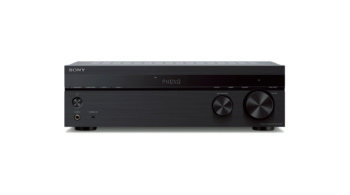
Sony offers you a hifi amplifier at a price that defies all competition. Versatility, precision and sober design, this device will please all those who like good sounds.
199 £ on BoulangerSony is one of the pioneers of the audio industry. The brand honors its reputation with this amplifier giving a hyper precise sound. You will appreciate the wide variety of sources with the presence of a phono input/output, 3 inputs and an analog input/output. Also note that it incorporates Bluetooth technology, increasing your connectivity possibilities. This device has an A+B selector that allows you to play your music in two different rooms.
Thanks to its sober and well thought-out design, this device will fit in any decor, no matter the room where it is installed. Like other Sony devices, this amplifier is very easy to use. Finally, you should know that the manufacturer offers a 2-year warranty, extendable for a sum of 39 euros. All in all, the Sony STR-DH190 Hifi Amplifier has all the essential features to allow you to enjoy your favorite songs and shows.
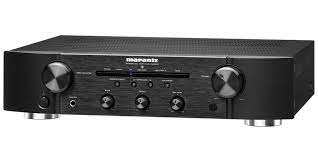
With this hi-fi amplifier, you'll enjoy the reactive current technology that characterizes Marantz products. You will appreciate the integrated low power mode and the automatic shutdown function.
1 751 £ on DartyTake advantage of an amplifier that uses technology that allows for exceptionally fast and accurate signal processing. With this device, you can connect two pairs of speakers working together (A+B) or separately (A or B). The use of reactive current ensures that the power amplifier is insensitive to difficult speaker loads and meets the requirements for SACD recordings.
Whether you are using an analog or digital source with two-channel or multi-channel inputs, you will always enjoy high quality sound. This device reproduces an original sound with a minimum of distortion. Finally, you should know that this device is guaranteed for 2 years, including 5 years of availability of spare parts.

If you want to buy a hifi amplifier that is easy to install and use, Denon's engineers have designed this model to meet these criteria.
583 £ on FnacWith this device, Denon's engineers have put the package. Delivering a power of 2x 100 W under 8 ohms, it gives a sound allowing a high-fidelity listening condition. This amplifier features the essential inputs, both analog and digital, plus 5 inputs and an HDMI output allowing you to connect it to a 4K UltraHD, OLED and QLED screen. With this Denon stereo hi-fi amplifier, you'll have access to all online music platforms including Deezer or Spotify.
Easy to install and configure, you'll easily master it, especially since the user manual is clear and precise. Finally, you should know that the manufacturer offers a 2-year warranty if you choose this device.
Any specific needs?
Your guide :
Rate this buying guide :By rating this buying guide, you are helping us to reward our best writers. Thank you!
| TOP OF THE TOP | CHEAP | TOP OF THE LINE | EXCELLENT | |

In accordance with our commitment, this buying guide does not contain any sponsored products. |
 9/10 |
 7/10 |
 9/10 |
 8/10 |
| OUR SELECTION |
Yamaha MusicCast RN803D black
|
Sony STR-DH190 Black
|
MARANTZ PM5005 BLACK
|
Denon DRA-800H Black
|
|
Once again, the Yamaha brand shows us that we should count on it when it comes to audio equipment. Indeed, this hifi amplifier is one of the flagship products of the Japanese technological firm.
|
Sony offers you a hifi amplifier at a price that defies all competition. Versatility, precision and sober design, this device will please all those who like good sounds.
|
With this hi-fi amplifier, you'll enjoy the reactive current technology that characterizes Marantz products. You will appreciate the integrated low power mode and the automatic shutdown function.
|
If you want to buy a hifi amplifier that is easy to install and use, Denon's engineers have designed this model to meet these criteria.
|
|
|
Dimensions
|
55 x 22 x 45 cm
|
430 x 13.3 x 284 cm
|
440 x 10.5 x 370 cm
|
434 x 151 x 339 mm
|
|
Weight
|
14 kg
|
7 kg
|
6.7 kg
|
8,6 Kg
|
|
Warranty
|
2 years
|
2 years
|
2 years old
|
2 years
|
|
Operating power consumption
|
250 W
|
230 W
|
110 W
|
220 W
|
|
Connectivity
|
Speaker Terminals A / B, 2 RCA Outputs, 2 Coaxial Inputs, 2 Optical Inputs, 1 Subwoofer Output, 1 Headphone Jack, 1 RCA CD Input, 1 MM and/or MC Phono Input, 3 Line Inputs, 1 Ethernet Port, 2 USB Ports.
|
1 External preamplifier output (pre-out), 1 external preamplifier input (main-in), 1 Headphone jack, 1 MM and/or MC phono input
|
6 Audio Inputs, MM Phono Input, 2 Audio Outputs, A/B Speakers, Gold Plated Screw Terminals, 4 Speaker Outputs, 6.35 mm Headphone Output
|
1 Jack Stereo 3.5 mm, 2 Optical Digital, 2 Analog Antenna for DAB+/FM, 1 Jack Stereo 3.5 mm Headphones, 1 Analog multi-piece, 1 USB -A, 5 HDMI inputs
|
Help us improve this table:
Report an error, request the addition of a feature to the table, or suggest another product. Thank you for your kindness!
We spend thousands of hours each year studying the major specialized websites, analyzing products of hundreds of brands and reading user feedback to advise you on the best products.
We are a product review company with a single mission: to simplify your buying decisions. Our research and testing helps millions of people every year find the best products for their personal needs and budget.
To support us you can: use our links to make your purchases (which often earns us a small commission), share our articles on social networks, or recommend our site on your blog. Thanks in advance for your support!
If you don't know where to start when it comes to finding a quality hifi amp and you're wondering what type of amp would be best for you, we'll explain the basics! To do this, you need to consider the following criteria.
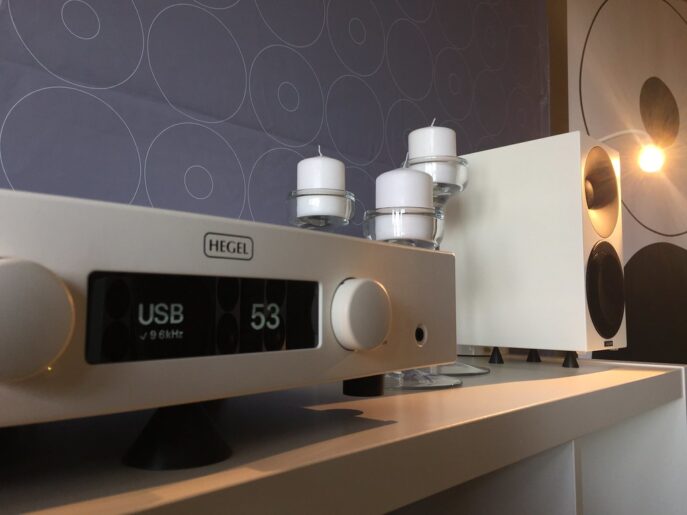
The compatibility of a hi-fi amplifier with stereo speakers is of paramount importance. There are a few things to consider to ensure that they complement each other. This speaker/amp compatibility encompasses an amplifier's power output (how many watts it can deliver to each channel of a music signal) as well as impedance (measured in ohms) and sensitivity (dB). The impedance measures the difficulty of driving the speaker by the amplifier. The sensitivity of a loudspeaker measures the power of this loudspeaker for a given input.
The standard way to measure the output of an amplifier is to connect it to an 8 ohm resistor and measure the power before the distortion becomes too high. However, the electronic load of a loudspeaker is much more varied than a single resistor, so we would be careful not to judge the power of an amplifier simply by the 8-ohm rating.
A better view of an amp's muscle is to compare its 8-ohm output power with its 4-ohm output power. An ideal amp would double its output by dividing the impedance by 2. While most will not achieve this, the closer this value is, the better. While you may be tempted to go for the most powerful amp you can afford, it would be best to get a more sensitive speaker. In fact, the output of an amplifier should double to match a 3 dB increase in speaker sensitivity.
After finding a match, you come to your next question: where to place the hifi amp? The surface on which your amplifier sits can greatly influence its performance. We strongly suggest that you place it on a dedicated hifi cabinet.
Your choice of stand should not be based solely on appearance. Different materials have different acoustic properties, so take that into account as well. Generally speaking, glass shelves tend to encourage the kit to sound forward, while wooden stands tend to give a warmer, more rounded balance.
All that power under its hood can raise the temperature to a pretty high level, so it's also important to give an amp a few inches of breathing room from a wall or rack to keep it from getting too hot.
Before placing your hifi amp with its back to the wall, look at the back panel to see what options are available to you regarding connecting sources, additional speakers and future upgrades. All hifi amps have RCA inputs, which can be used for all the usual sources: music players, CD players, etc. One of these RCA connections is sometimes a phono input, designed specifically to be connected to a turntable and handle the very low signal levels and extra equalization required for such a source.
Then there are 3-pin XLR connections, which carry balanced audio signals. These are typically found in a recording studio and most high-end audio products. Rega is one of the brands that have opted for analog-only amplifiers. But even entry-level hifi amps now have a digital-to-analog converter (DAC) to increase their versatility. Bluetooth is also increasingly making its way onto the feature list of many recent hifi amps.
As far as outputs are concerned, there is sometimes one to add an external subwoofer to bring extra sonic weight to a system. Tape outputs are fixed line-level outputs (i.e., not affected by the amplifier's volume control) that send a maximum level signal to the connected kit, usually a cassette deck. But one of the most common outputs is a 3.5mm or 6.3mm headphone output for connecting headphones, and is often found on the front panel of a hifi amp.
Hifi amplifier manufacturers often use terms like Class A, Class B, Class A/B, and Class D without explaining them. Essentially, these different classes of amplifiers are shorthand for how certain combinations of circuits work. We don't want to go too far into the explanation, but briefly, here's what you can expect for each class.
Class A amps have low distortion, but are not good at driving sensitive speakers. Class B amps are better at driving speakers, but may have a touch of distortion. A Class A/B amp is a hybrid design that eliminates the drawbacks of both Class A and Class B, but can be more expensive. Class D amps are small, light, and efficient and are among the most common types of amps available today.
When it comes to choosing a hifi amp, the heavier the better. Good quality components weigh a bit. We're talking a lot of metal here, and the more massive the components, the better they'll sound. As an example, take the Sonos Amp around 700 € which weighs 2 kg and compare it to the Cambridge Audio CXA61 which weighs 8 kg, so 4 times more.
Don't get me wrong: the Sonos Amp is not bad, but there is no doubt that the Cambridge Audio amplifier sounds better, mainly because of the internal components. Weight isn't everything, but it can give you an idea of whether or not the amp you're buying is right for you.
A device designed for domestic use, more precisely for listening to music, the hifi amplifier has a pre-amplification function and a power amplification function. It has only analog audio connections. In general, the Hi-Fi amplifier has only two built-in amplifiers. These provide a two-channel speaker configuration, left and right. It does not do any surround sound processing or decoding.
Hi-Fi amps have some optional features that are the same as those of home theater amps. In fact, some hifi amps also offer a wireless multi-room audio option. Many Hi-Fi amps offer a subwoofer preamp output. This allows you to use compact main speakers. You can combine them with a subwoofer to reproduce the extreme low frequencies.
There are also Hi-Fi amplifiers that include both Ethernet and Wi-Fi connectivity. This makes access to music streaming services or a local network device possible.
With high-end amplifiers that offer A/B speaker connections, up to 4 speakers can be connected. Powered by the same two amplifiers, left and right, the "B" speakers or third and fourth channels mirror the main speakers. Of course, half of the power goes to each speaker, and this, without cutting the power supply of these two main amplifiers.
Apart from that, there are hifi amps that have interesting additional options like video connectivity to satisfy the users. There are even some that offer a headphone connection.
If you've ever taken a look at a hifi amp's data sheet, one of the things you may have noticed is the amplifier's class, usually designated by a letter. The most common classes of amplifiers in home audio are Class A, A/B, D, G and H. These classes are not simple rating systems, but descriptions of the amplifier's topology, i.e. how they work at a basic level. So what are the advantages and disadvantages of each hifi amp class? We explain it all to you.
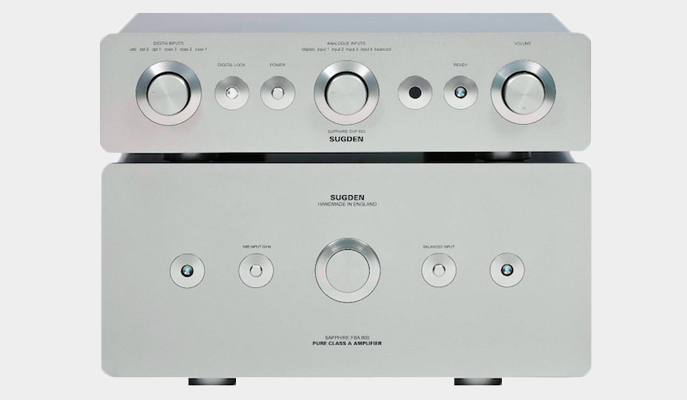
Compared to the other classes of amplifiers we will describe, class A hifi amplifiers are relatively simple devices. The determining principle of class A operation is that all the output devices of an amplifier must be conductive during the entire 360° cycle of a waveform.
2 output devices take the full 360° cycle. One will carry the positive charge of the cycle, while the other handles the negative cycle. The main advantage of this arrangement is low distortion, as even order harmonics are cancelled out.
Because of the positive attributes associated with Class A operation, it is considered the gold standard for audio quality in many audiophile circles. However, there is one significant drawback to this configuration: efficiency. The requirement of Class A designs to have all output devices conductive at all times results in considerable energy waste, which is ultimately converted to heat.
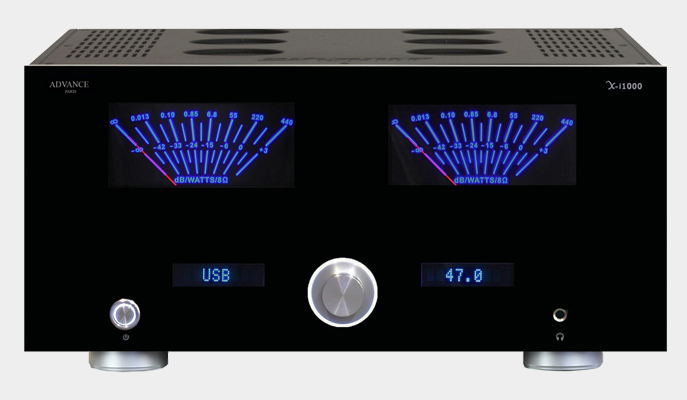
While all output connections of a Class A amplifier conduct a load 100% of the time, Class B hifi amps use a push & pull arrangement so that only half of the output devices are conductive at any given time.
As a result, Class B amplifiers are significantly more efficient than their Class A counterparts. Because of its relatively high efficiency, Class B has been used in some professional hifi amplifiers as well as in some home hifi amplifiers.
Despite their obvious strength, the vast majority of Class B hifi amps on the market suffer from what is known as crossover distortion. Crossover distortion is a problem of delay in the transfer between the devices handling the positive and negative parts of the waveform. Needless to say, such distortion in sufficient quantity is audible.

Class A/B, as one might infer, combines the best of Class A and Class B to create a hifi amplifier without the drawbacks of either. Because of this combination of strengths, Class A/B amplifiers largely dominate the consumer market.

No Class G amplifiers or Class H models are officially recognized. Instead, they are variations of the class A/B models, using voltage rail switching and rail modulation, respectively. In both cases, under low demand conditions, the system uses a lower rail voltage than a Class A/B amplifier.
This significantly reduces power consumption. When high power conditions occur, the system dynamically increases the rail voltage to handle the high magnitude loads. So what's the downside here? In a word, it's the cost.
Transistor-based hifi amps rely entirely on electrical circuitry to do the job. This circuitry is always internal and generally cannot be modified by the listener. The sound of these amplifiers generally tends to be a bit more neutral and balanced, with an emphasis on crisp detail, although there are many exceptions.
Tube amps are simply different. They transmit their electrical signal to prominent glass vacuum tubes, which are usually visible to the listener and can be changed for sonic customization in a process called tube rolling. The sound that passes through these tubes is modified by a process known as thermionic emission. In general, the tubes produce a warm, rich, characteristic sound that is less concerned with being realistic and more concerned with highlighting certain parts of the frequency spectrum.
These 2 types of hifi amps differ in the way they process sound. So choosing a type depends less on how much you spend, as there are examples of both types in all price ranges, but more on the type of sound you are looking for. In any case, transistor hifi amps are generally more common than tube amps.

Superior performance
Of course, the main advantage of a hi-fi system is performance. A hi-fi amp reproduces the sound of the CD or digital track more accurately than an Lo-Fi system. There is less distortion of the sound than with an Lo-Fi system, with less distracting sounds such as crackles and pops. The frequency range that the amp sends to the speakers more closely matches the frequencies encoded on the CD or MP3. So the sound isn't just rich. It's exactly what the songwriter or producer intended.
Good sound quality
All components of an audio system affect its hi-fi quality. Most high-end options also have quality cables, speakers and high-resolution sound sources. The amp is the center of this system: it amplifies the signal from the sound source to be heard on the speaker.
A good configuration
Another advantage is the configuration of the hi-fi system. Hi-fi amplifiers are usually part of plug-in-play audio systems, consisting of single-use equipment. With this type of design, it's easy to add and remove components as needed, or to reconfigure the entire system. It's also easy to troubleshoot problems in a plug-in-play system.
Distinctive good quality
Hi-Fi amplifiers also have distinctive qualities depending on the company or person who made them. Manufacturers are known for their specific sound signatures. With hi-fi amplifiers, one can choose a model from a manufacturer that focuses on clear vocals, room-shaking bass or whatever suits the user.
Room for improvement
While most Lo-Fi consumer audio systems are meant to be set and forgotten, hi-fi systems offer plenty of room to add upgrades across the board. Different add-ons and components can expand the system's sound profile, improve less satisfying areas and even add new features to the system. This also reduces the need for a massive initial investment. You can get a decent system and cost-effective speakers even in the beginning, and once the system has proven itself, it's easy to get better speakers and add more parts to the setup.
Opt for a hifi amplifier with integrated DAC.
Let's say you're listening to digital audio, like music streaming from Spotify. This music exists only as code on your computer or phone, and you obviously can't hear the code. To convert this code into a real audible signal, you need a digital-to-analog converter or DAC. This will convert the signal in the cleanest and most efficient way possible, allowing it to be amplified. It's quite possible to get a stereo amp with a DAC included, which means all you have to do is connect it to your source with the right cable.
An integrated hifi amp is better.
Built-in amplifiers are known for their power and high sound, as they can power speakers. In addition, built-in speakers are also flexible because, they quickly accept a variety of inputs: record player, CD player and network music player, among others.
Choose a parallel installation.
To
make life as simple as possible, most people put boxes of the same impedance in a parallel circuit. If you do this, it's just a matter of dividing that impedance by the number of speakers. Take the ohmic value of the speakers and divide it by the number of speakers. If you have four speakers rated at 16 ohms, you would need 16/4 to get the overall rating of 4 ohms.
Use quality cables.
Cables aren't just important, they're essential. They are usually the last thing anyone will consider, when in fact they are the first thing you should look at. After all, cables move the power and signals needed from one place to another. If you have poor quality cables, your signal will also be poor. A cable made from premium materials and properly shielded will keep the music signal from degradation.
Take care of your hi-fi amp.
To
keep your speakers well maintained, periodically tighten the screws on the control units. You don't need any fancy equipment for this, just a standard screwdriver and a careful hand. This will reduce interference from unwanted vibrations. A system will only be as good as its weakest link, so keep your connections clean.
The best hi-fi amp depends on your needs and your budget. Read our buying guide to find out which products are the best.
This distinction is actually quite simple. Hifi amps have two channels: a left and a right channel. An A/V receiver, on the other hand, has five or more channels and is designed to power a home theater setup with surround sound. This means that you shouldn't buy a hi-fi amp if you plan to use more than two speakers and a subwoofer. It simply won't be able to power your home theater system.
The job of preamps is to take the low-level audio signal from your music source and prepare it for the next stage of amplification. Some units like network players have a built-in preamp, so there's no need to add one to your setup.
Given how wirelessly listening to music and other audio files is done these days, it's no surprise that manufacturers have built Bluetooth and Wi-Fi into hifi amps. What's less common are Wi-Fi connected amps, allowing you to stream directly to your wireless network.
This is one of the most serious and frustrating problems you can encounter with a hifi amp, as it is very difficult to diagnose and fix. Your hifi amp could be working fine but have a sudden drop in volume or even turn off completely. After that, it starts working again. This can be the first sign of a tube at the end of its life. However, it could also be a sign of something else. Try testing with an old original tube and see if that solves the problem.
Every month we help more than 1 000 000 people buy better and smarter.
Copyright © 2022 - Made with ♥ by buyingbetter.co.uk
Your reviews and buying guides 0% advertising, 100% independent!